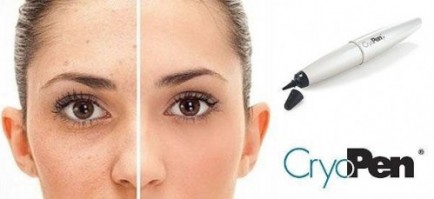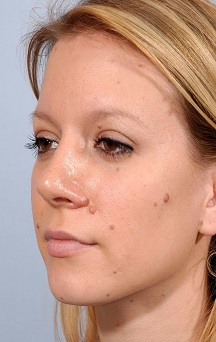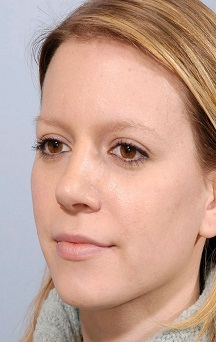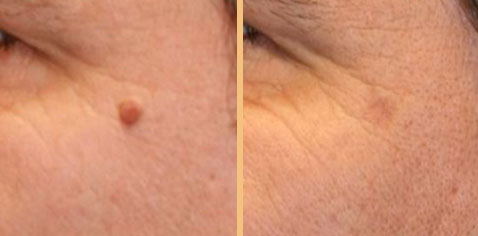Cryotherapy | Cryopen

Cryotherapy treatment uses extreme cold to painlessly destroy imperfections you might have. These imperfections may include unwanted moles, warts, skin tags, or keloids. At Refine Clinic we use the top-of-the-line Cryotherapy tool the CryoPen.
The CryoPen emits a fine jet of nitrous oxide under high pressure, which allows Dr. Natalia to work with millimeter precision. This cryotherapy tool destroys the tissue by freezing the inter-cellular fluid, forming ice shards and crystals which rupture the membrane, thereby destroying the cell. It’s so incredibly accurate, that there is no collateral damage to surrounding healthy tissue.
Follow-up treatment may be required.
Because cryotherapy doesn’t use scalpels or chemicals, there is no need for an anesthetic. The removal of moles or lesions is virtually painless with little or no scarring. The CryoPen safely, effectively, and painlessly removes the following:
- Benign lesions
- Removal of actinic keratoses
- Seborrhoeic keratoses
- Viral warts
- Treatment of basal cell carcinomas
Also, Cryotherapy is excellent for athletes as it helps to treat problems such as tissue damage, reduces inflammation, and even increases cell rejuvenation.
Benefits of Cryopen
- Freezing tissue without the use of cryogenic liquids or gases, such as liquid nitrogen, carbon dioxide, or nitrous oxide.
- No exposure to dangerous cryogenic gases or liquids.
- Quiet, patient-friendly, low risk procedure.
- Immediate treatment without referral.
- Simple, safe, and effective treatment.
The Cryotherapy Procedure
- During the procedure, the area freezes and turns white. After this white area thaws, a flushing occurs and the area will turn red. This thawing is associated with a pinching sensation as a wheal is formed. This wheal will typically turn into a blister which may last for 3 to 5 days before it scabs. The scab will fall off within 2 weeks.Depending on the extent of freeze, a new scab may form and repeat the process. The lesion will be completely healed in 2 to 6 weeks. After primary healing occurs, the area will be lighter than the surrounding area due to loss of melanocytes (melanin producing cells which are primarily responsible for skin color).
How are Tissues Destroyed?
Cell destruction occurs when a cell is rapidly brought down to a very low temperature and ice crystals form. The ice crystals destroy the cell organelles and protein matrixes. Water then rushes into the surrounding area, causing a blister and a disruption of the local blood supply. This blister forms 2‐24 hours after being frozen. Blisters may take several days to dissolve. Once a blister breaks, a crust will form over the lesion. Healing occurs from 1 to 6 weeks, depending on depth of freeze and size of lesion.
The CryoPen requires no anaesthetic and has less scarring than other techniques of skin lesion removal with minimal post‐treatment care.
Before & After
Cryotherapy is suitable for men and women. Below are some of the results that clients will achieve. Remember, every client is different and results will vary. This is why we always have a consultation with our patients before going ahead with treatments so that the patient is aware of the results he or she may get – or not get.




